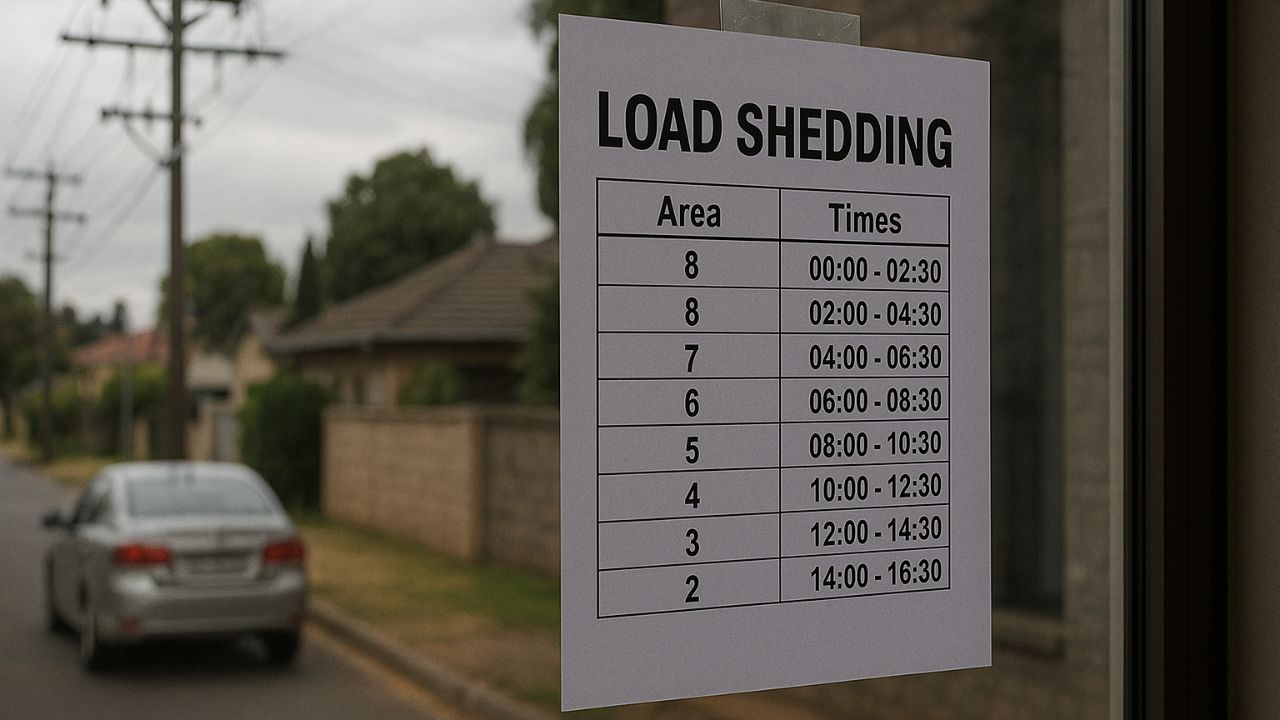
The announcement of the Electricity Load Shedding Schedule for September 2025 has brought both clarity and concern for households, businesses, and essential service providers across South Africa. With the ongoing challenges of power generation and demand management, Eskom and local municipalities have now released detailed, area-wise timings to help residents plan their routines in advance. While load shedding is not new, the latest schedule emphasizes the need for preparedness, energy conservation, and alternative arrangements to minimize disruptions. Families are urged to keep backup lighting, charge essential devices ahead of outages, and plan meal times accordingly. Businesses, particularly small enterprises that depend heavily on consistent electricity supply, must adapt their operating hours or rely on generators to sustain productivity. The official schedule also highlights that load shedding may vary by stage depending on grid stability, making it vital for communities to stay updated via verified platforms. This September, proactive planning will be the key to handling the inconvenience of rolling blackouts.
Area-Wise Timings and Their Impact
The newly released schedule for September 2025 divides the country into regions, with specific load shedding windows for each municipality and province. For example, metropolitan areas such as Johannesburg, Cape Town, and Durban face carefully structured rotations to balance power usage while ensuring that critical services like hospitals and emergency facilities remain prioritized. Rural areas, however, often face longer or less predictable outages due to infrastructure challenges. Residents are encouraged to monitor official Eskom updates and their municipality’s digital platforms to avoid confusion caused by unofficial information circulating on social media. The staggered approach is designed to spread the impact evenly across communities, but it still creates hurdles for households with school-going children and professionals working remotely. Many families are adjusting their daily schedules, waking earlier or shifting tasks to periods when power is guaranteed, highlighting the adaptability that citizens continue to display in navigating the national power crisis.
Preparing for Daily Routines During Load Shedding
One of the biggest challenges of load shedding is its disruption of daily routines, from cooking meals to ensuring that students can study without interruption. The September 2025 schedule allows residents to plan, but it also demands discipline and preparation. Families are advised to invest in rechargeable lights, power banks, and surge protectors to protect sensitive electronics. Schools and colleges are expected to adjust class timings or adopt hybrid learning strategies when necessary. For professionals, particularly those in the digital economy, consistent internet connectivity remains a challenge during outages. Many workplaces have shifted to flexible hours to accommodate employees dealing with rolling blackouts. Beyond households and businesses, public services such as traffic lights and railway operations are also affected, creating wider disruptions. By aligning routines with the published area-wise schedule, individuals can reduce stress and make better use of the available hours of electricity without letting the outages completely derail their productivity.
Role of Technology in Managing Load Shedding
Technology has become an essential ally in helping South Africans cope with load shedding schedules. Numerous mobile apps and municipality-run digital portals now provide real-time updates on load shedding stages and area-specific outages. For September 2025, Eskom has improved integration with online systems, making it easier for households to anticipate changes and prepare accordingly. Smart home solutions, such as inverter-powered lighting, solar panels, and battery storage units, are becoming increasingly popular among middle-class households as a long-term investment. Businesses are also turning to cloud-based systems to minimize data loss and disruptions during blackout periods. Moreover, local communities are creating WhatsApp groups and social media pages where neighbors share updates, tips, and solutions. While technology cannot completely eliminate the inconvenience of power cuts, it significantly improves readiness and reduces uncertainty. With the right digital tools, residents are better equipped to manage their schedules and minimize the impact of load shedding.
Long-Term Solutions and Public Response
While the September 2025 schedule offers short-term predictability, the public continues to demand long-term solutions to South Africa’s energy crisis. The reliance on aging coal plants, combined with maintenance backlogs, has contributed to recurring outages that undermine economic growth and public confidence. Government initiatives promoting renewable energy investments, independent power producers, and energy efficiency programs are gaining momentum, but progress remains slow compared to public expectations. Many households are taking matters into their own hands, installing solar panels or joining neighborhood energy-sharing projects to reduce dependence on Eskom’s grid. Public frustration is evident, but so is resilience, as South Africans have learned to adapt to rolling blackouts with creativity and resourcefulness. The release of area-wise timings for September is a step toward transparency, yet it also underscores the urgency of sustainable reforms. For many, the hope is that current sacrifices will pave the way for a more stable, renewable-driven energy future.






